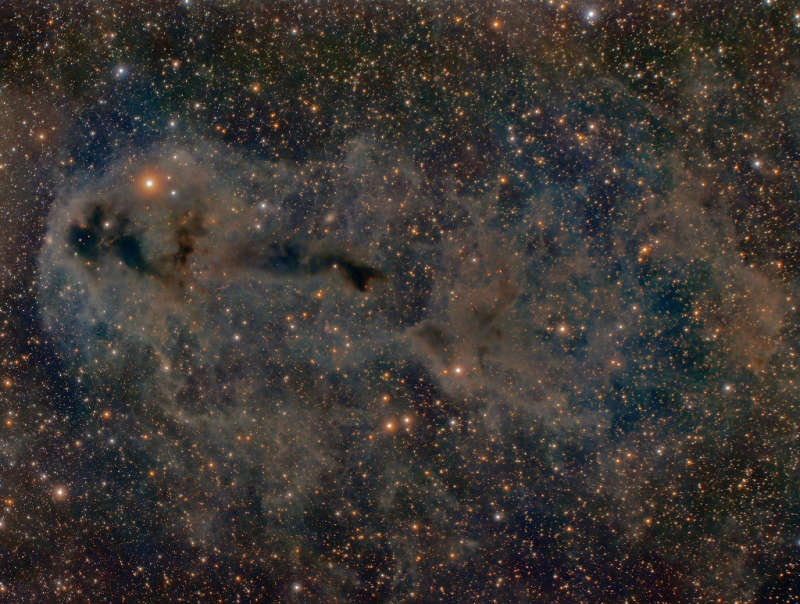Credit & Copyright: Lynn Hilborn
Explanation:
Stars are forming in Lynds Dark Nebula
(LDN) 1251.
About 1,000 light-years away, the dusty molecular cloud
is part of a complex of dark nebulae mapped toward the
Cepheus flare
region, drifting above the plane of our Milky Way galaxy.
Across the spectrum,
astronomical explorations of the obscuring
interstellar clouds reveal energetic shocks and outflows
associated with newborn stars, including the telltale reddish glow from
scattered
Herbig-Haro objects seen in this sharp image.
Distant background galaxies also lurk on the scene,
visually buried behind the dusty expanse.
The deep telescopic field of view spans about
two full moons on the sky, or 17 light-years at the
estimated distance of LDN 1251.
1999 2000 2001 2002 2003 2004 2005 2006 2007 2008 2009 2010 2011 2012 2013 2014 2015 2016 2017 2018 2019 2020 2021 2022 2023 2024 2025 |
Январь Февраль Март Апрель Май Июнь Июль Август Сентябрь Октябрь Ноябрь Декабрь |
NASA Web Site Statements, Warnings, and Disclaimers
NASA Official: Jay Norris. Specific rights apply.
A service of: LHEA at NASA / GSFC
& Michigan Tech. U.
|
Публикации с ключевыми словами:
molecular cloud - star formation - Молекулярные облака - пыль - Пылевая туманность
Публикации со словами: molecular cloud - star formation - Молекулярные облака - пыль - Пылевая туманность | |
См. также:
Все публикации на ту же тему >> | |
